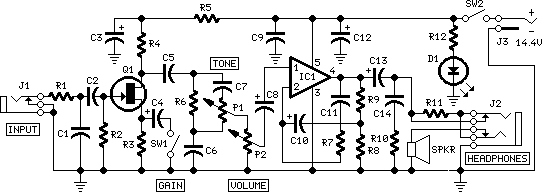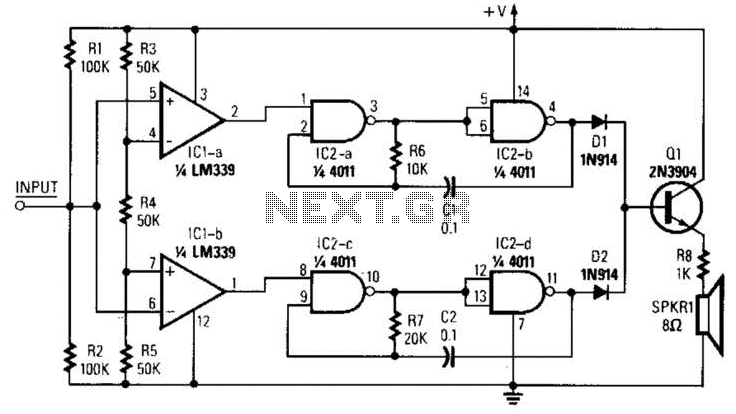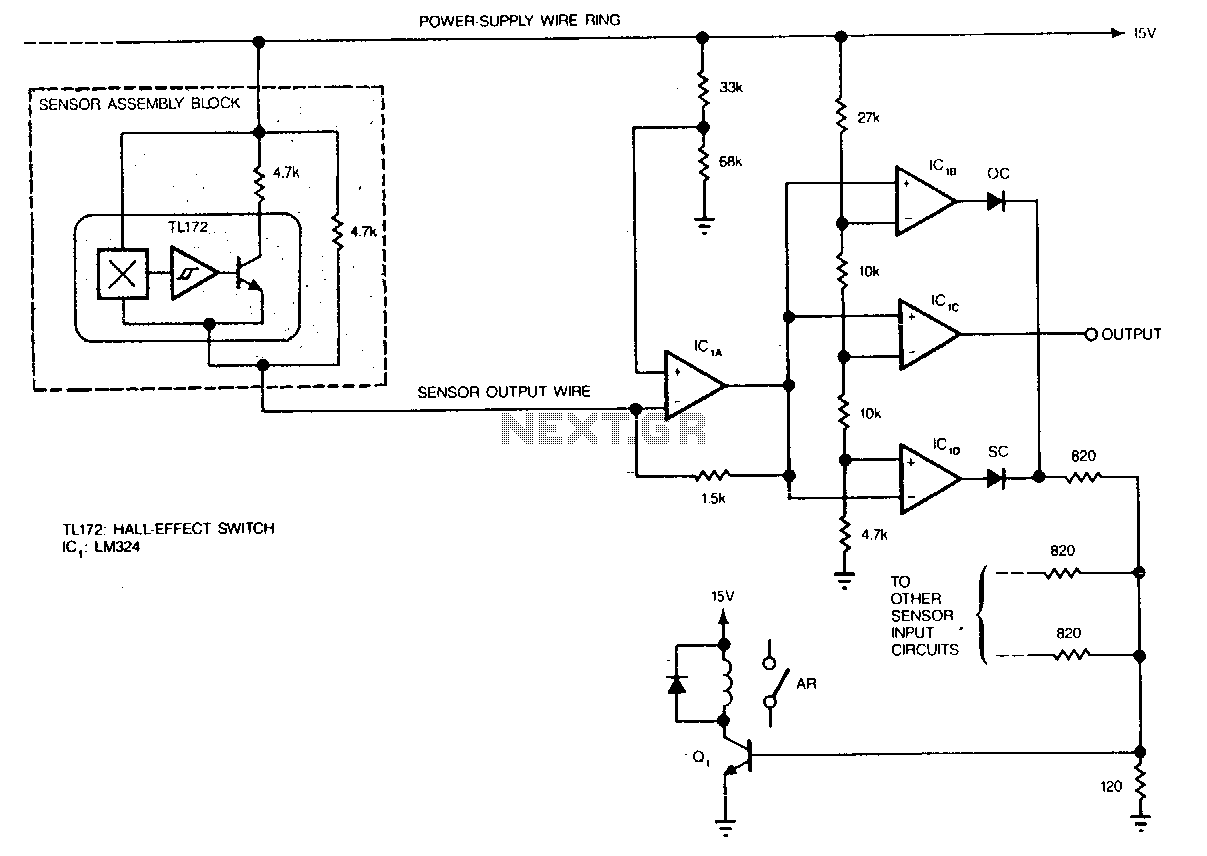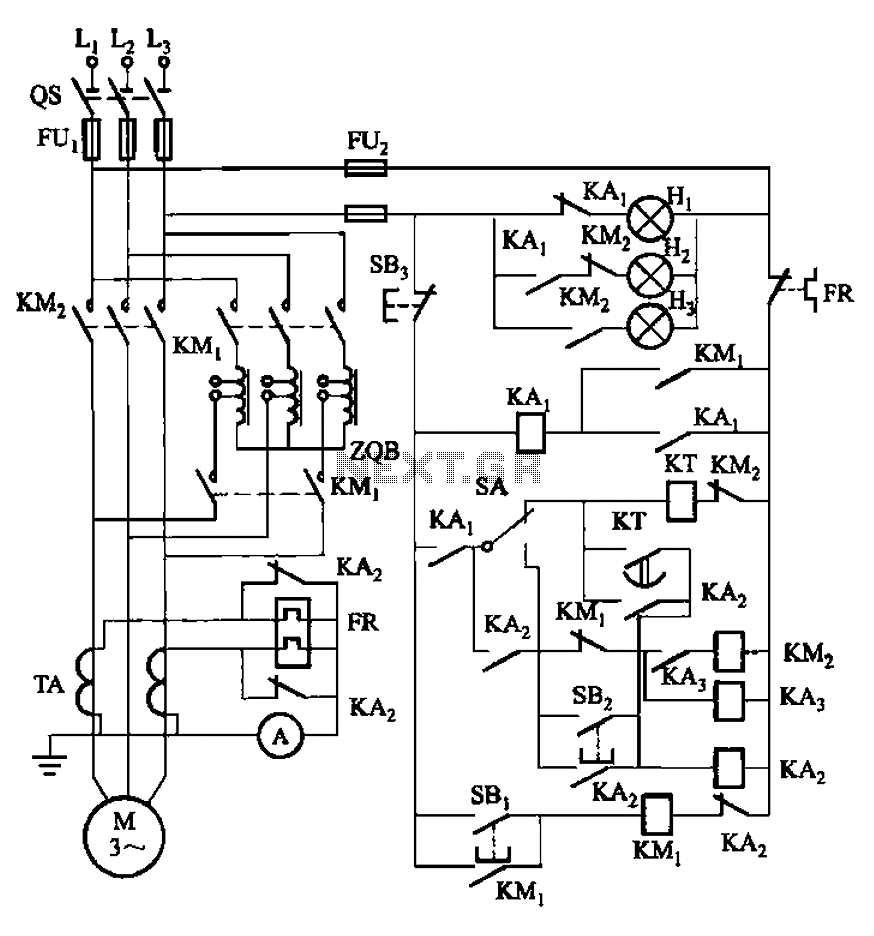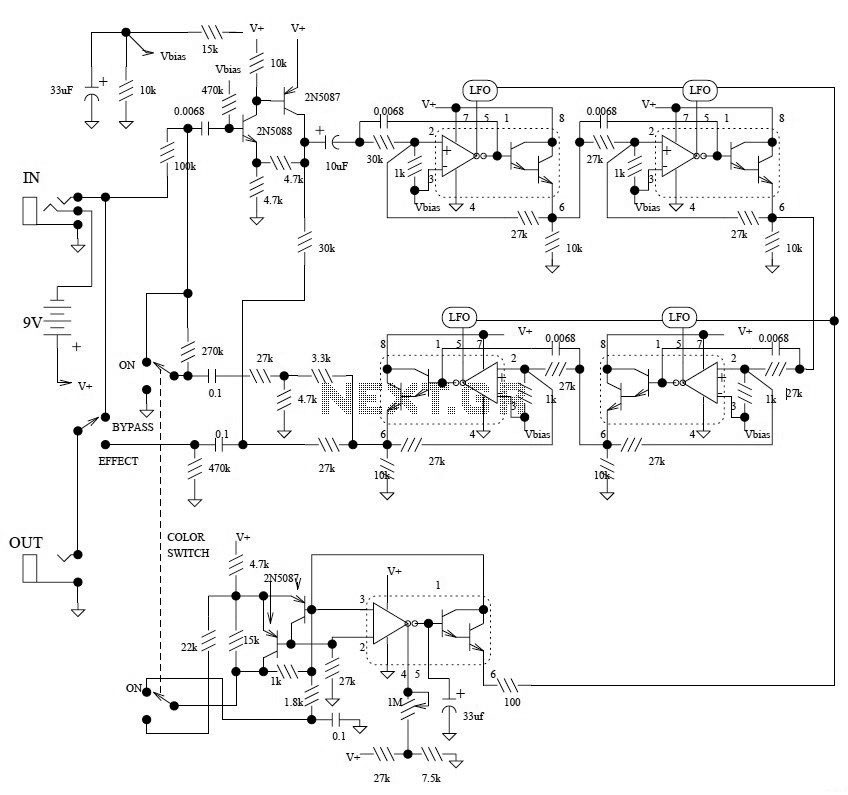
Fuzz Box Distortion Pedal Guitar Effect
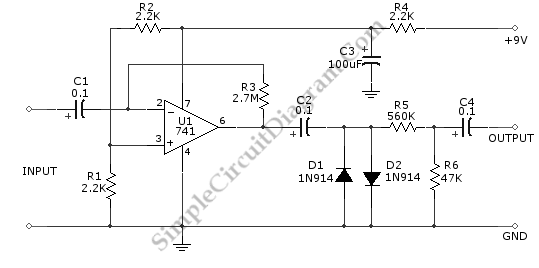
This guitar effect circuit employs a straightforward high-gain amplification stage, succeeded by symmetric clipping achieved through a parallel diode clipper. The gain is provided by a 741 operational amplifier.
The circuit design begins with a high-gain amplification stage utilizing the 741 operational amplifier. This op-amp is configured in a non-inverting configuration to maximize the voltage gain while maintaining a high input impedance, which is crucial for preserving the integrity of the guitar signal. The gain can be adjusted by incorporating feedback resistors in the circuit, allowing for flexibility in the amplification level based on the desired output characteristics.
Following the amplification stage, the signal is routed to a symmetric clipping section composed of parallel diodes. This clipping stage is essential for shaping the tonal characteristics of the guitar signal, introducing harmonic distortion that enhances the richness and sustain of the sound. The parallel configuration of the diodes allows for clipping in both the positive and negative halves of the waveform, resulting in a balanced distortion effect.
The choice of diodes in this stage can significantly influence the sound; silicon diodes will yield a different clipping response compared to germanium diodes, often resulting in a warmer tone. Additionally, the forward voltage drop of the diodes will affect the onset of clipping, allowing for further customization of the effect.
The output of the circuit can be connected to the guitar amplifier or further processing effects, ensuring compatibility with standard audio equipment. Proper power supply decoupling should be implemented to minimize noise and ensure stable operation of the op-amp. Overall, this circuit design provides a robust foundation for creating a versatile guitar effect that can be tailored to various musical styles.This guitar effect circuit uses a simple high gain amplification, followed by a symmetric clipping using parallel diodes clipper. The gain of the 741 op-amp.. 🔗 External reference
The circuit design begins with a high-gain amplification stage utilizing the 741 operational amplifier. This op-amp is configured in a non-inverting configuration to maximize the voltage gain while maintaining a high input impedance, which is crucial for preserving the integrity of the guitar signal. The gain can be adjusted by incorporating feedback resistors in the circuit, allowing for flexibility in the amplification level based on the desired output characteristics.
Following the amplification stage, the signal is routed to a symmetric clipping section composed of parallel diodes. This clipping stage is essential for shaping the tonal characteristics of the guitar signal, introducing harmonic distortion that enhances the richness and sustain of the sound. The parallel configuration of the diodes allows for clipping in both the positive and negative halves of the waveform, resulting in a balanced distortion effect.
The choice of diodes in this stage can significantly influence the sound; silicon diodes will yield a different clipping response compared to germanium diodes, often resulting in a warmer tone. Additionally, the forward voltage drop of the diodes will affect the onset of clipping, allowing for further customization of the effect.
The output of the circuit can be connected to the guitar amplifier or further processing effects, ensuring compatibility with standard audio equipment. Proper power supply decoupling should be implemented to minimize noise and ensure stable operation of the op-amp. Overall, this circuit design provides a robust foundation for creating a versatile guitar effect that can be tailored to various musical styles.This guitar effect circuit uses a simple high gain amplification, followed by a symmetric clipping using parallel diodes clipper. The gain of the 741 op-amp.. 🔗 External reference
